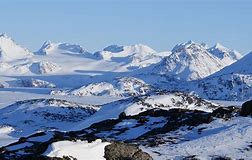Part of the problem was that Croll's computations suggested that the most recent ice age occurred eighty thousand years ago, whereas the geological evidence increasingly indicated that Earth had undergone some sort of dramatic perturbation much more recently than that. Without a plausible explanation for what might have provoked an ice age, the whole theory fell into abeyance. There it might have remained for some time except that in the early 1900s a Serbian academic named Milutin Milankovitch, who had no background in celestial motions at all—he was a mechanical engineer by training—developed an unexpected interest in the matter. Milankovitch realized that the problem with Croll's theory was not that it was incorrect but that it was too simple.
在一定程度上,問題在于克羅爾的計算認為,最后一次冰川期出現在8000年前,但是地質學證據越來越表明,地球在比3000年近得多的一段時期內曾經歷過某種嚴重的攝動。不對造成一個冰川時代的原因作出合理的解釋,整個理論就沒法站住腳。要不是一位名叫米盧廷·米蘭柯維契的塞爾維亞學者的出現這個問題本來會存在一段時間。米蘭柯維契根本沒有研究天體運動的背景——他是一個訓練有素的機械工程師——但他在20世紀初突然對這一問題產生了興趣。他發現,克羅爾的理論的問題并不是它不正確,而是它太簡單。

As Earth moves through space, it is subject not just to variations in the length and shape of its orbit, but also to rhythmic shifts in its angle of orientation to the Sun—its tilt and pitch and wobble—all affecting the length and intensity of sunlight falling on any patch of land. In particular it is subject to three changes in position, known formally as its obliquity, precession, and eccentricity, over long periods of time. Milankovitch wondered if there might be a relationship between these complex cycles and the comings and goings of ice ages. The difficulty was that the cycles were of widely different lengths—of approximately 20,000, 40,000, and 100,000 years, but varying in each case by up to a few thousand years—which meant that determining their points of intersection over long spans of time involved a nearly endless amount of devoted computation. Essentially Milankovitch had to work out the angle and duration of incoming solar radiation at every latitude on Earth, in every season, for a million years, adjusted for three ever-changing variables.
地球在空間運動時,不僅軌道的長度和形狀會有所變化,而且朝向太陽的角度——它的傾斜度、偏側度和離心度,也會有規律地發生變化,所有這些都影響了照射到地面任何一點的陽光的時間長度和強度。尤其是,地球在漫長的時間內要經歷三種位置變化,即所謂的黃道交角、歲差和偏心度。米蘭柯維契覺得,這些周期性的復雜變化與冰川期的產生和消退也許存在某種關系。困難在于,這種周期性交化的時間跨度相差過大——有的大約2萬年,有的4萬年,還有的10萬年,差不多每個周期的差別都長達幾千年——這就意味著,要想確定它們在漫長的時間段里的交叉點,必須經過幾乎是無休止的精心演算。最主要的是,米蘭柯維契必須計算出,100萬年來,隨著上述三種因素的不斷變化,陽光在每一季節照射地球上每一緯度的角度和持續時間。











